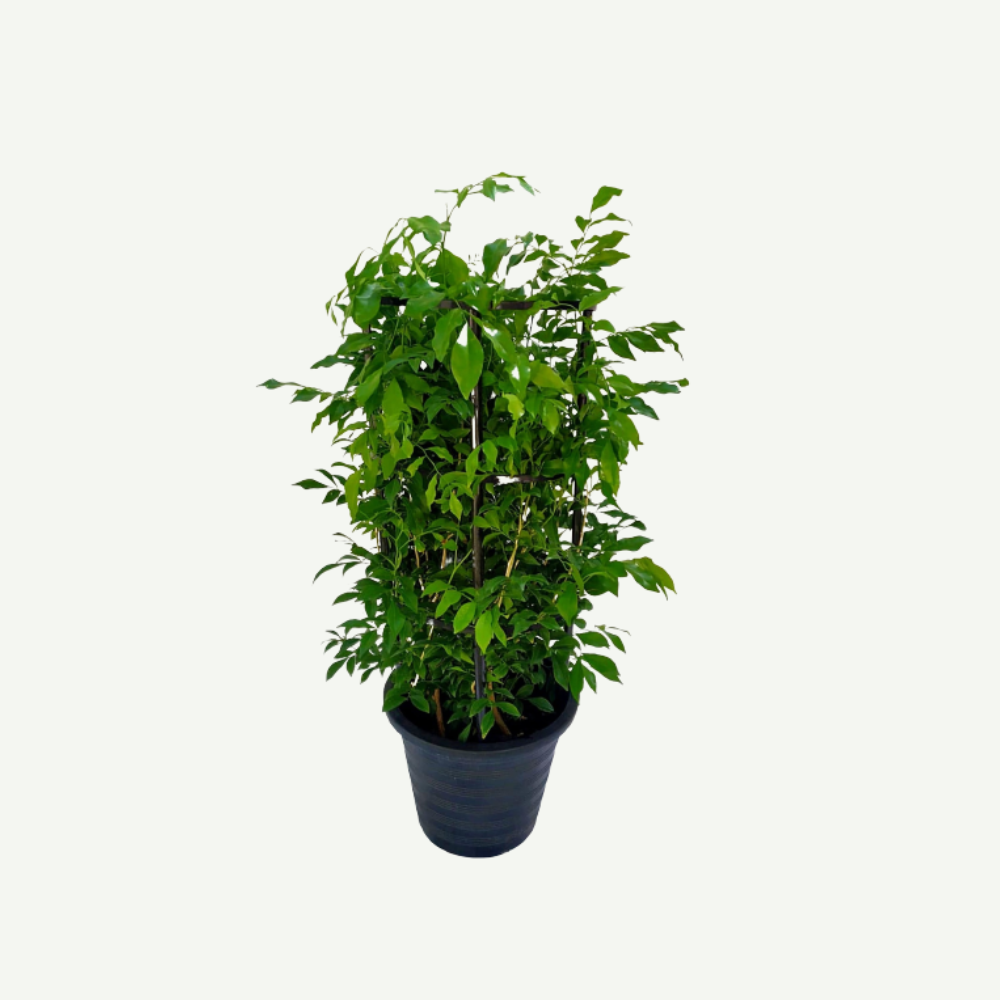Murraya paniculata, commonly known as Orange Jasmine or Orange Jessamine, is a highly fragrant and evergreen shrub or small tree belonging to the Rutaceae family. Native to Southeast Asia and Australia, Murraya paniculata is widely cultivated for its beautiful, white, and sweetly scented flowers, which resemble those of true jasmine. It is a popular choice for landscaping and gardens, especially in tropical and subtropical regions, where it thrives and blooms profusely.
Cultural Significance:
Murraya paniculata is valued for its fragrance, and the flowers are often used to make garlands and floral arrangements in some cultures.
In traditional medicine, the leaves of Murraya paniculata have been used for their potential health benefits, including as an anti-inflammatory and for treating certain skin conditions.
Landscape Use:
Murraya paniculata is commonly grown as an ornamental plant in gardens, landscapes, and outdoor spaces where its fragrance can be appreciated.
It is often used as a hedge or a screen due to its bushy growth habit and attractive appearance, providing privacy and beauty to outdoor areas.
Murraya paniculata is also suitable for container planting on patios and balconies, allowing people in urban environments to enjoy its fragrance and beauty.
Overall, Murraya paniculata is a delightful and fragrant addition to gardens and landscapes. Its beautiful flowers and captivating scent make it a favorite among gardeners and outdoor enthusiasts, bringing an aura of sweetness and charm to any outdoor space.
Here’s a general description of Murraya paniculata:
Plant Characteristics:
Flowers: Murraya paniculata produces clusters of small, white, waxy flowers with five petals. The flowers are intensely fragrant and have a sweet, citrusy scent that permeates the air around the plant.
Leaves: The leaves of Murraya paniculata are glossy, dark green, and composed of several lance-shaped leaflets. When crushed, the leaves also release a pleasant citrus aroma.
Growth Habit: Murraya paniculata is a medium-sized shrub or small tree that can reach heights of 6 to 15 feet (2 to 4.5 meters). It has a dense and compact growth habit with a bushy appearance.
Cultural Requirements:
Light: Murraya paniculata thrives in full sunlight to partial shade. It prefers at least 4 to 6 hours of direct sunlight daily for optimal growth and flowering.
Temperature: This plant is well-adapted to warm climates and can tolerate some cold temperatures but may suffer damage in prolonged frost or freezing conditions.
Watering: Murraya paniculata requires regular watering, especially during the growing season. Keep the soil consistently moist but not waterlogged. Proper drainage is essential to prevent root rot.
Soil: The plant grows well in well-draining, fertile soil with a slightly acidic to neutral pH.
Fertilization: Regular fertilization with a balanced, diluted liquid fertilizer during the growing season (spring and sum






